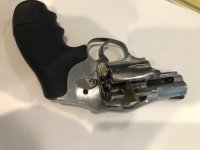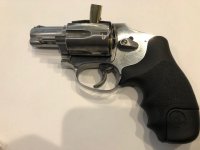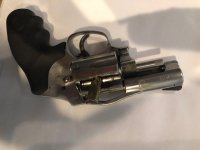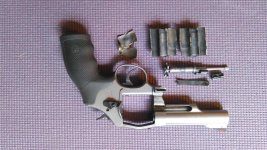Brand new 640 shooting mild 357 plinking rounds. It is sad for me because it will not be replaced. It is good for me that I was not injured. And it is clear that I made a mistake in my loading. Not sure what it was, pulled the remaining rounds from that batch and saw nothing wrong, but this cannot happen without a reloading error.
But it is also strange. I did not notice any increase in recoil when it went off. I also did not notice any increase in sound. There were two other gents there observing and they also did not notice anything strange in the report of the shot. I would have thought there would have been a noticeable difference with a kaboom.
I called Smith and Wesson to discuss and I knew that I did not have warranty coverage because it was my fault but they sent me a mailing label anyway and it is now in their hands. I cannot imagine it can be repaired.
But it is also strange. I did not notice any increase in recoil when it went off. I also did not notice any increase in sound. There were two other gents there observing and they also did not notice anything strange in the report of the shot. I would have thought there would have been a noticeable difference with a kaboom.
I called Smith and Wesson to discuss and I knew that I did not have warranty coverage because it was my fault but they sent me a mailing label anyway and it is now in their hands. I cannot imagine it can be repaired.




